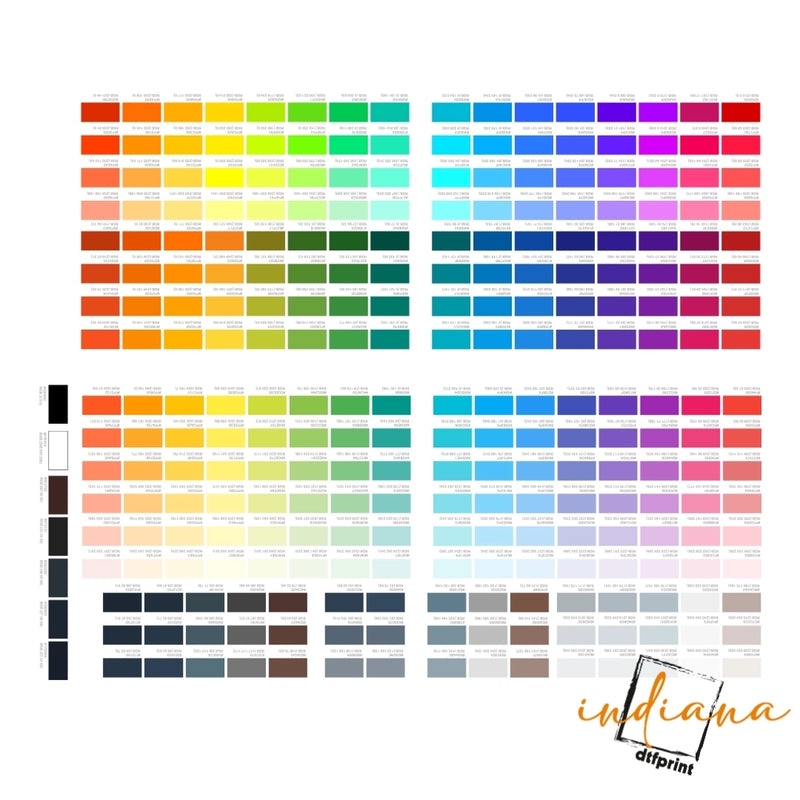If you’re in the apparel printing business or love crafting your own custom designs, Direct-to-Film (DTF) transfers are a game changer. They offer stunning colors, excellent stretch, and compatibility with a wide range of fabrics. But what if your transfers start cracking, peeling, or lifting after just a few washes?
You’re not alone these issues are surprisingly common, especially for beginners. The good news? Most DTF problems are easily preventable if you know what to look for.
Let’s break it all down in plain English.
First, Why Are Your DTF Transfers Cracking or Peeling?
When DTF prints start to fail whether they crack, lift at the corners, or peel completely it usually points to one or more avoidable mistakes. These can include:
- Incorrect heat press settings
- Cheap or low-quality materials
- Peeling too early (or too late)
- Skipping the post-press step
- Applying transfers to unsuitable fabrics
- Poor garment care after application
Let’s go deeper into each one and show you exactly how to fix it.
1. You’re Not Using the Right Heat, Pressure, or Time
Think of your heat press like a recipe. Too much heat or too little pressure, and the results fall apart.
- Too hot: The glue gets scorched, making the transfer brittle.
- Too cool: The adhesive doesn't melt completely, and the film won't bond well.
- Not enough pressure: The transfer doesn't fuse properly, especially around edges.
Recommended DTF settings:
- Temperature: 300–320°F
- Time: 10–15 seconds
- Pressure: Medium to firm (you should feel strong resistance when closing the press)
Tip: Use a heat gun or infrared thermometer to check your press’s accuracy. Many heat presses run hotter or cooler than their display says.
2. Low-Quality Materials = Low Durability
One of the biggest culprits behind cracking and peeling is using cheap films, inks, or adhesives. Not all DTF supplies are created equal.
- Inconsistent film may not stretch properly.
- Low-grade powder adhesive might fail to bond.
- Cheap ink can fade, flake, or crack easily.
What to do instead:
Buy from trusted DTF suppliers. Look for reviews, ask about testing, and don’t cut corners just to save a few bucks especially if you're selling your designs.
3. Your Fabric Might Not Be Ready
Applying a DTF transfer to fabric with moisture, lint, or residue is like painting on a dusty wall it just won’t stick properly.
Here’s how to prep your fabric:
- Use a lint roller to clean the surface
- Always pre-press the garment for 3–5 seconds to remove moisture
- Avoid applying to waterproof or heavily coated materials unless designed for it
Best fabrics for DTF: Cotton, cotton/poly blends, polyester, fleece, and canvas.
4. You’re Peeling Too Early or Too Late
DTF films come in two main types: hot peel and cold peel.
Peeling at the wrong time is a major cause of partial lifting or tearing.
- Hot peel: Peel within 2–5 seconds after pressing.
- Cold peel: Let the print cool completely (usually 30–60 seconds) before peeling.
Don’t guess check your film’s instructions! If you’re not sure, test a small area before committing.
5. You’re Skipping the Post-Press
Think of the post-press as sealing the deal. Skipping it is like forgetting to put a topcoat on painted wood.
After peeling the film, cover the print with parchment paper or a Teflon sheet and press again for 5–10 seconds. This helps the adhesive settle, smooths out the design, and prevents future peeling or cracking.
6. Washing Mistakes Are Ruining Your Work
Even a perfectly applied DTF transfer won’t survive aggressive washing. If your customers throw garments in hot water with harsh detergents or dry them on high heat, the prints won’t last long.
Smart garment care tips:
- Turn shirts inside out before washing
- Use cold water and mild detergent
- Skip the dryer if possible or use low heat
- No bleach or fabric softeners
Pro Tip: Include a care card with every order. Your customers will appreciate the guidance, and your designs will stay looking fresh.
Quick Troubleshooting Checklist
|
Problem |
Possible Cause |
Fix |
|
Cracking after first wash |
Overheating or brittle film |
Lower heat; use better materials |
|
Edges lifting |
Poor pressure or cold press |
Increase pressure; confirm peel method |
|
Film tears or sticks |
Wrong peel timing |
Peel hot/cold as directed |
|
Faded print |
Cheap ink or too much heat |
Upgrade ink; recalibrate press |
|
Peeling after multiple washes |
No post-press or bad washing |
Add post-press; include care instructions |
Final Thoughts
When done correctly, DTF transfers are durable, flexible, and vibrant, with the ability to last for dozens of washes. But like anything in print production, the details matter.
Whether you're customizing tote bags, hoodies, or tees, your success with DTF printing depends on using quality materials, accurate settings, and proper techniques—from prep to press to peel.
And remember, every mistake is a learning opportunity. Dial in your process, and your DTF prints will not only look amazing they’ll last.











